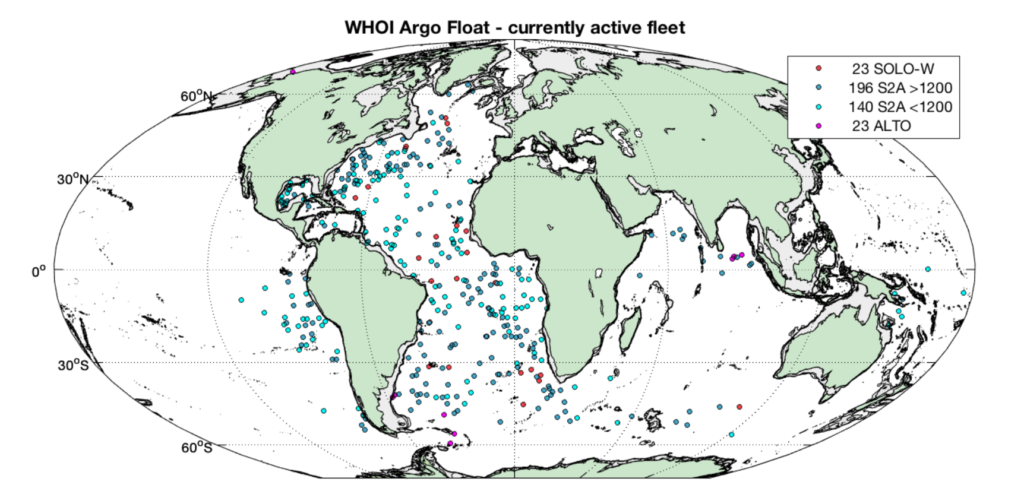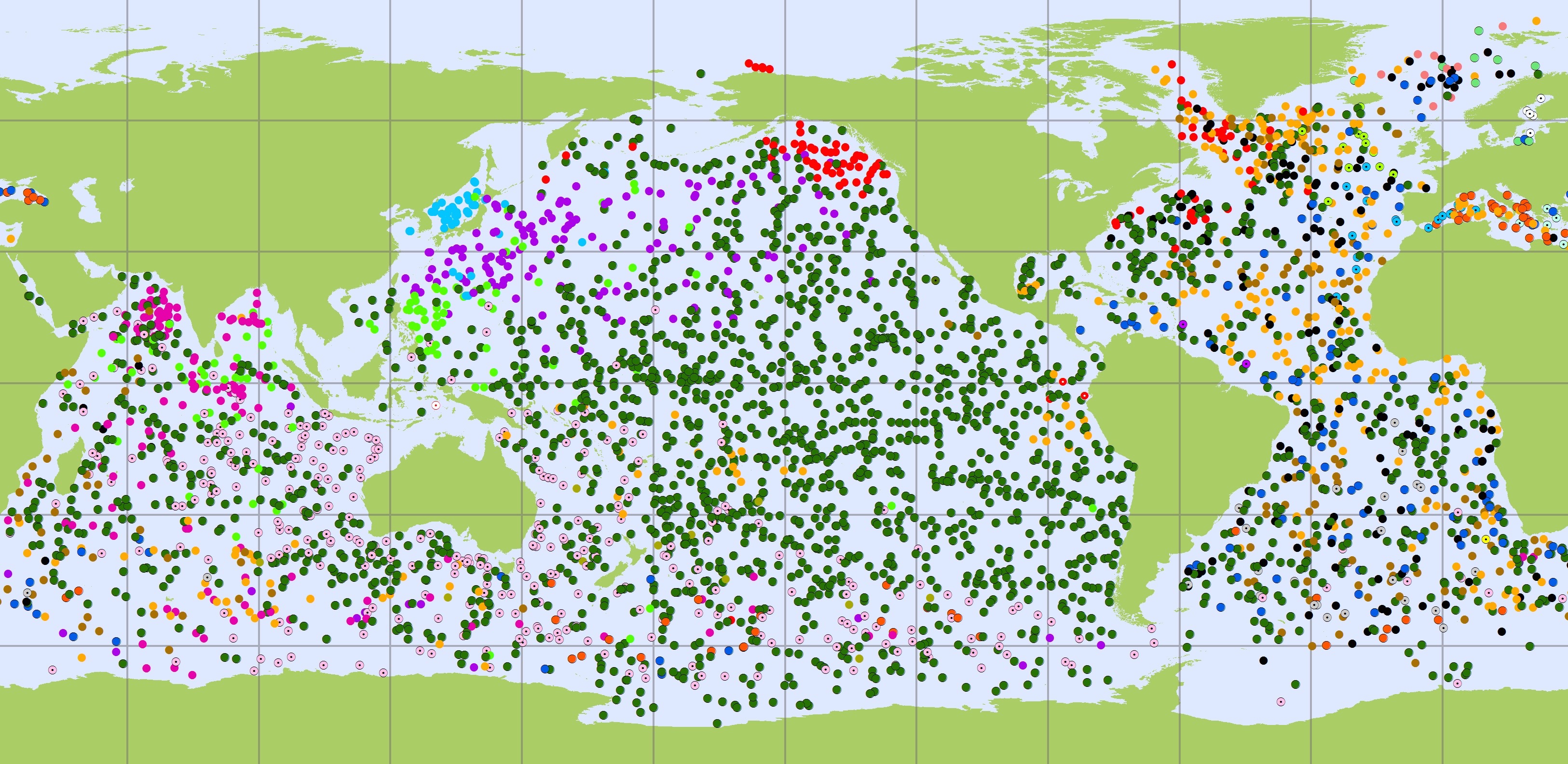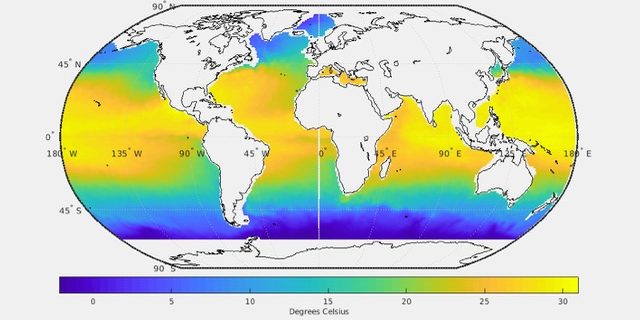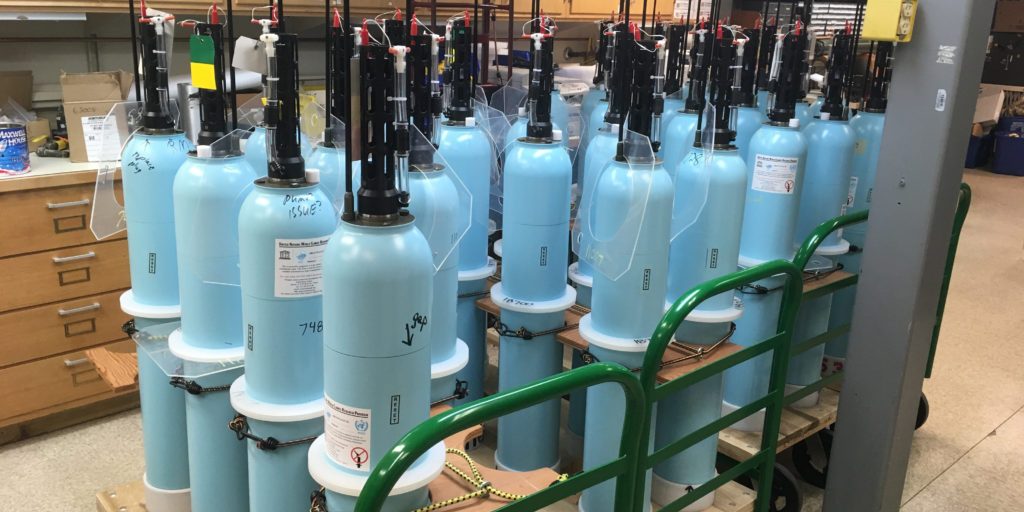People
Meet the Argo team at WHOI.
Data
All Argo data are made freely available for use by scientists and the public. Find out how to download it.
Operations
Learn how WHOI Argo team maintains and expands its fleet of profiling floats.
Where is WHOI Argo now?

An example of an Argo temperature contour. This plot shows profile data from float 7463, an S2A float that was deployed in January 2018 off the coast of the southeastern United States and has traveled northward along the Gulf Stream.





